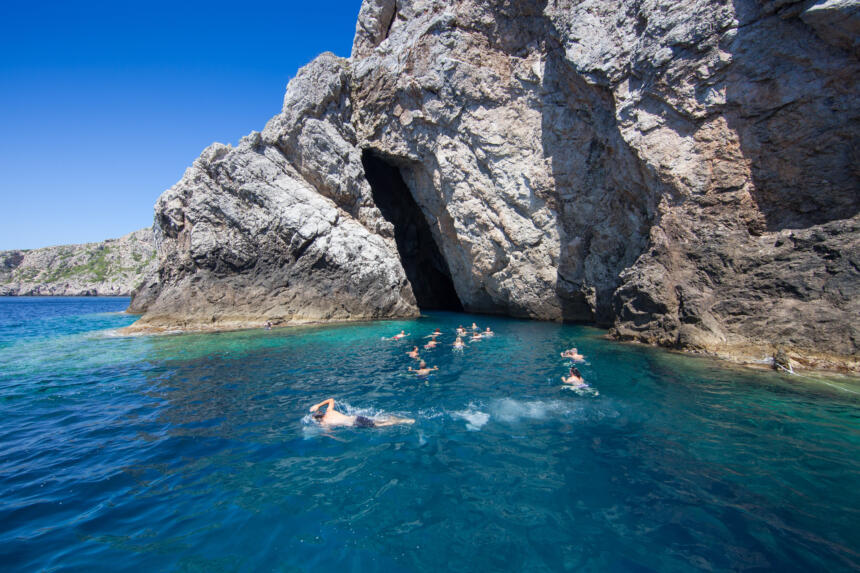Rare Encounters: Keep Your Eyes Peeled for the Mediterranean Monk Seal on Your Boat Charter in Croatia
The Adriatic Sea is full of beautiful and cute creatures. One of them is certainly the Mediterranean monk seal. The mammal under the Latin name Monachus Monachus is officially extinct in the Adriatic Sea, and occasional spottings of individuals visiting the Adriatic is quite rare. The question is – do you feel lucky? While chartering a boat and sailing the area, we recommend observing wildlife as an interesting pastime. In particular, kids might be excited to become lookouts (with or without binoculars, depending on their age) for all sorts of marine life.
In case you do actually see one, head on over to the Blue World Institute and report it. The information will be very much appreciated.
The species
Adult specimens can reach up to 2.4 meters (7.4 feet) in length and weigh up to 400 kilograms (880 lb). They used to live in big groups and were very curious. Because the fishermen held them responsible for torn nets and loss of catch, big campaigns of hunting and killing were organized in the 19th century. Today, the Mediterranean Monk Seal has changed its habits and is usually spotted either as lone individuals or in very small groups.

As mammals, they need to go to the surface to breathe, but they can stay underwater for up to 10 minutes. Their body has adapted to life under the sea in that they are able to close their nasal and ear passages. The peak of their activity is at nighttime, and they mate on land and deliver babies on land. Typically, the female seeks out a secluded cave that has an underwater entrance in the fall.
The Mediterranean Monk Seal is an excellent hunter thanks to its sharp teeth. The majority of its diet is fish, cephalopods, and crustaceans. They can dive down to 50 meters.
Where to find the Mediterranean Monk Seal in Croatia
In the 17th and 18th centuries, the Mediterranean Monk Seals inhabited the coastal area of Croatia and Montenegro. The fishermen viewed them as their fiercest enemies, so they were very relentless in their killing campaigns. So today, there are no official reports of this species inhabiting this region. However, there are about 600 remaining specimens throughout the wider Mediterranean area. Most of them inhabit the Aegean Sea, but the Northeastern part of the Atlantic is also home to some groups of Mediterranean Monk Seals.
The last known monk seal to inhabit Croatia was a “celebrity” of sorts. Her name was Adriana, and she died of pneumonia in 2014.
Since then there have been no confirmed Mediterranean Monk Seals in the Adriatic Sea, individuals may only be spotted along the coastal area.
There is a Monk Seal Cave on Bisevo Island in Tresjavac Bay. It’s not as famous as the Blue Cave, but some find it even more enchanting. The small sandy beach inside is where the female Mediterranean Sea Monks used to deliver babies.

How can I help save them?
It is our duty to the animal world to preserve this species from extinction. Below is a list of actions that might help ensure that this seal species re-emerges and flourishes on the Croatian coast.
- Raise awareness of the problem
- Support conservation organizations
- Buy fish from sustainable origin
- Reduce ocean pollution
- Report a sighting
Feel free to let us know if you spot any on your cruise in Croatia. And share any photos or videos if you managed to make some. While you’re immersing yourself in Croatia, make sure not to miss the opportunity to explore the vibrant marine life that dwells in its waters.
Read more of our blogs to delve deeper into the world of dolphins, seahorses, and sea turtles. Prepare for your exciting discovery cruise in the breathtaking Adriatic Sea.






